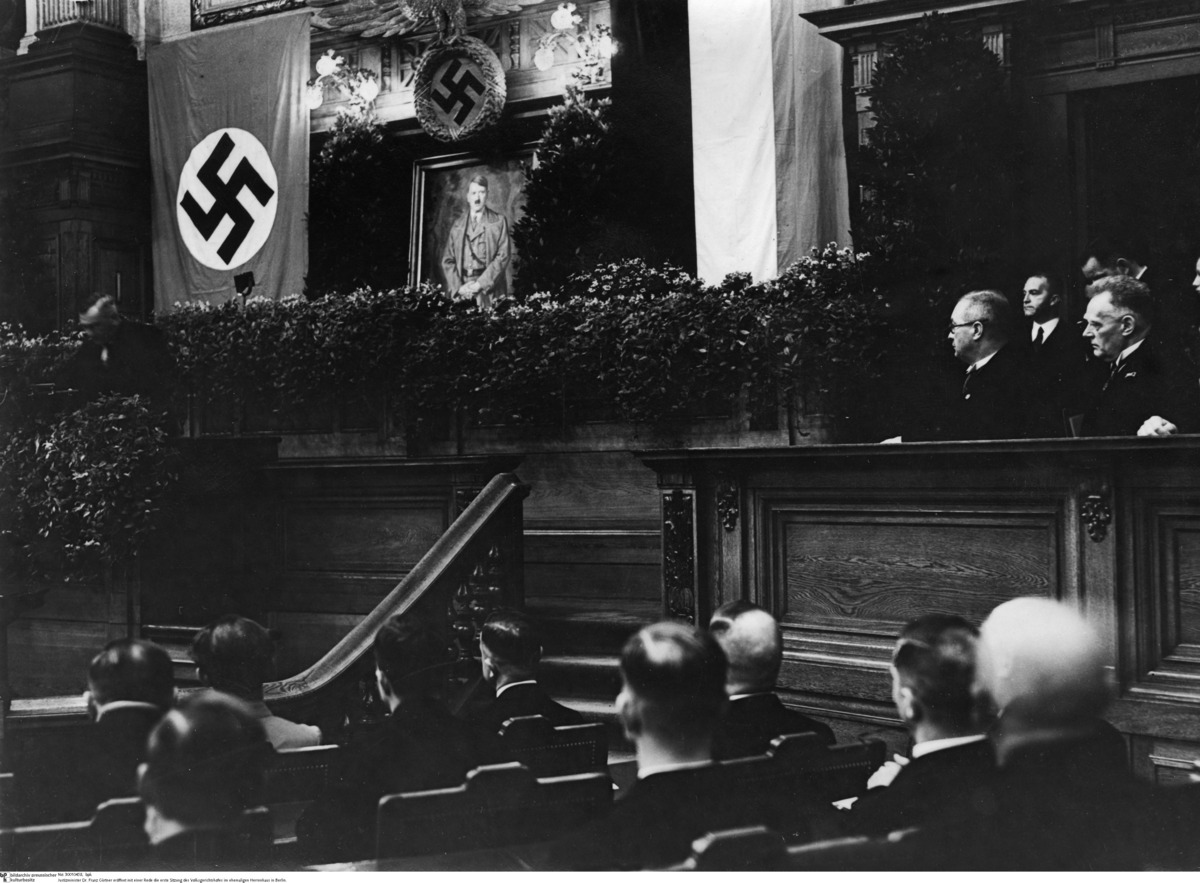Abstract
In the Third Reich, the law did not control the state; instead, the
state controlled the law. The People’s Court
[Volksgerichtshof or VGH] is the
best-known example in a series of new Nazi special courts that operated
alongside the Reich courts, especially in the area of political
offenses. In 1934, after four of the five men accused in the Reichstag
Fire trial were acquitted, Hitler ordered the establishment of the
People’s Court, which henceforth dealt chiefly with cases of treason.
Judgments were handed down by the senate of the People’s Court (which
consisted of two professional judges and three politically “reliable”
lay judges) after brief, highly politicized hearings. The accused had no
right of appeal. Between 1934 and 1939 alone, the People’s Court heard
3,400 cases. Most of the accused were Communists or Social Democrats,
and they were sentenced either to death or to prison terms averaging six
years. After the beginning of the war, the jurisdiction of the People’s
Courts was broadened even more, and by 1945 it had issued thousands of
death sentences. This photograph shows Minister of Justice Franz Gürtner
delivering a speech at the opening of the first session of the People’s
Court in the former Manor House
[Herrenhaus] in Berlin.
